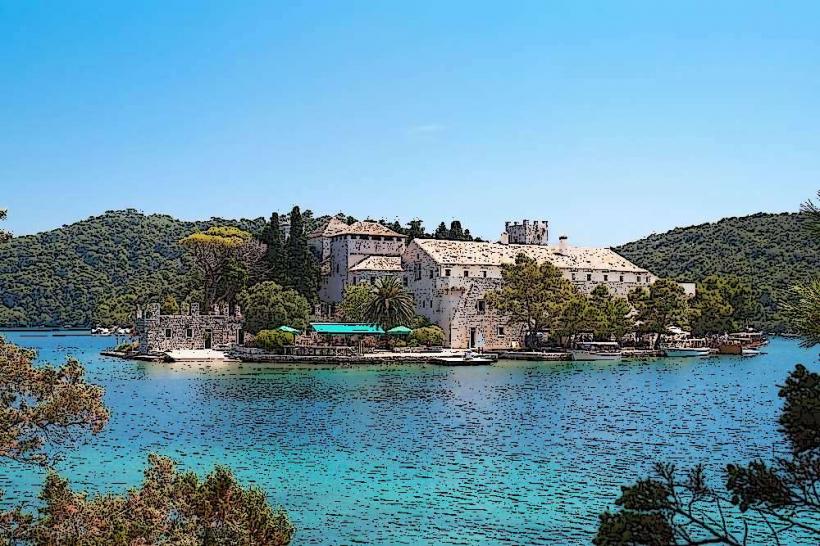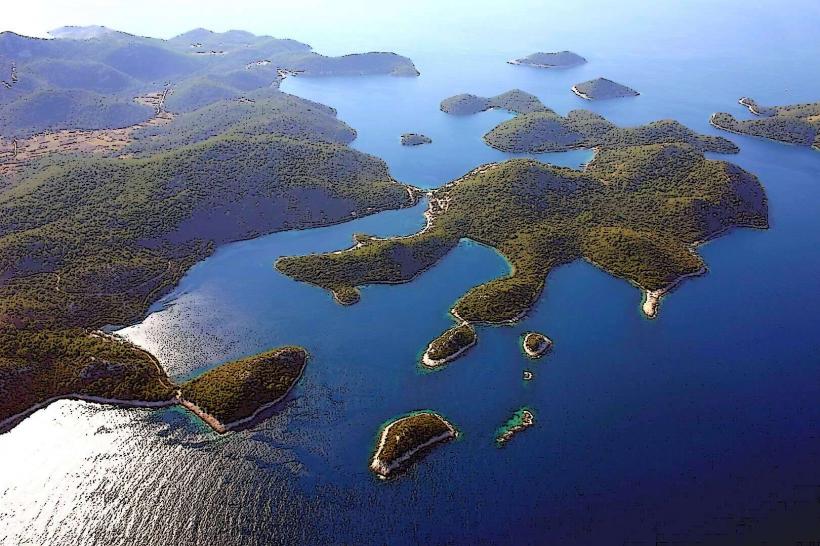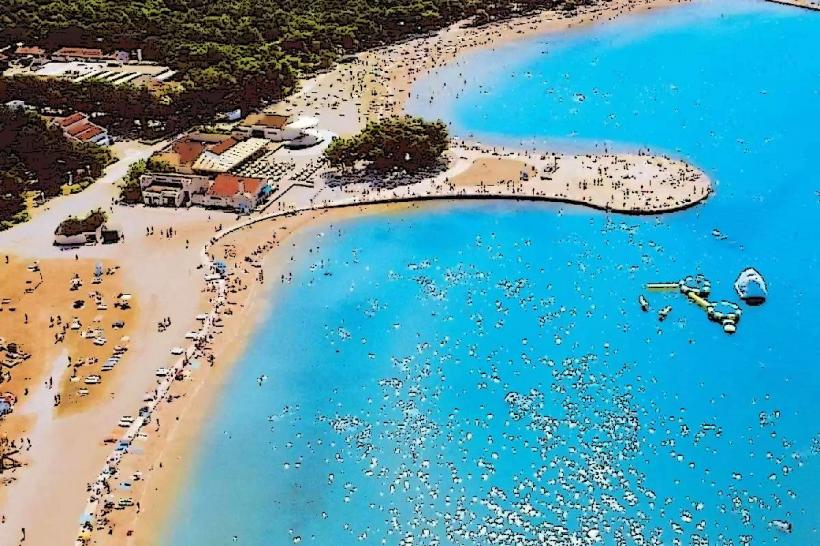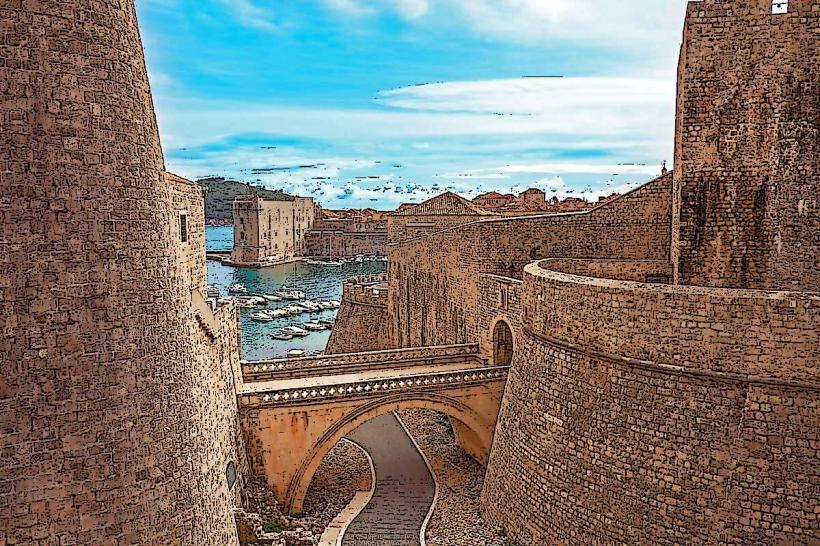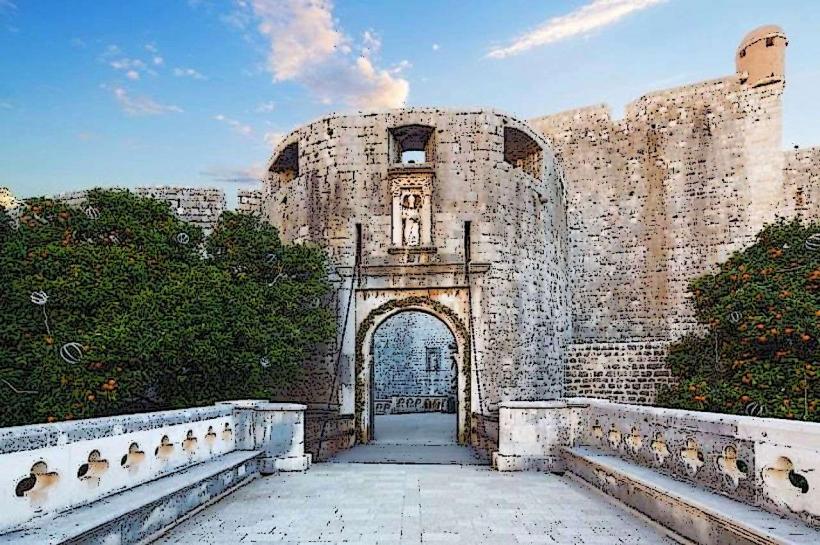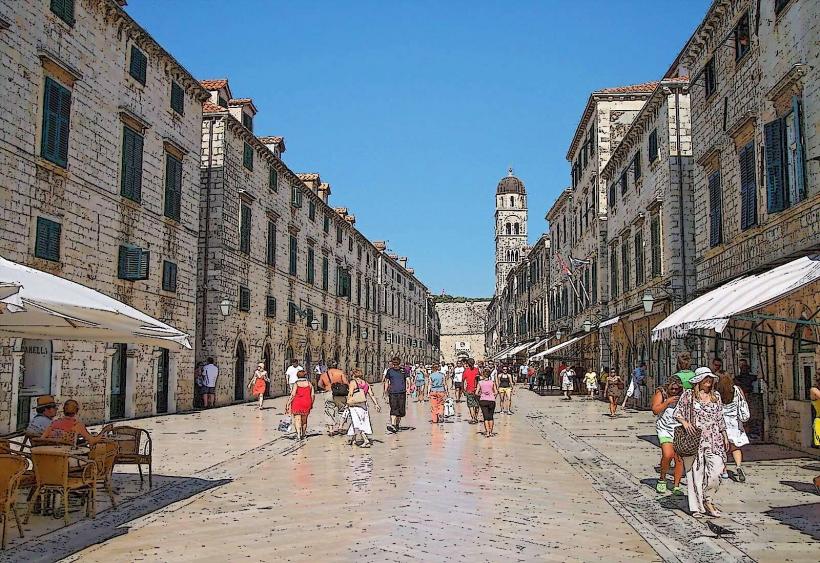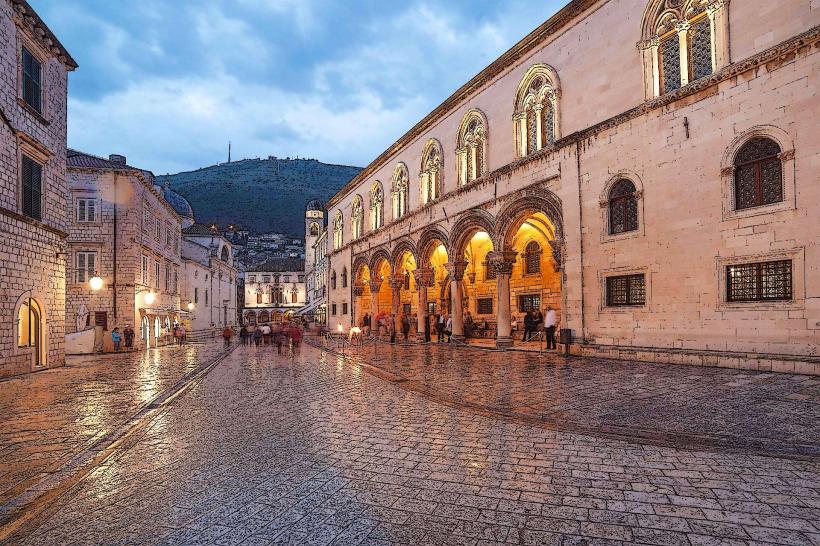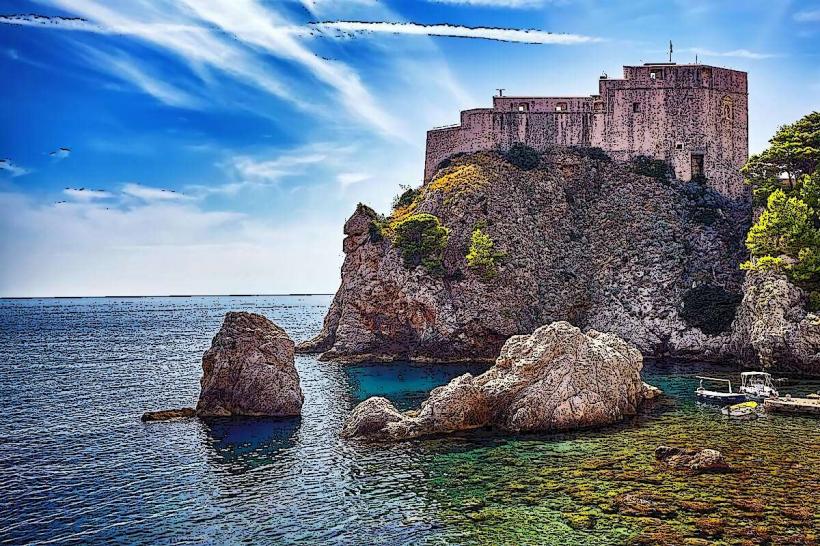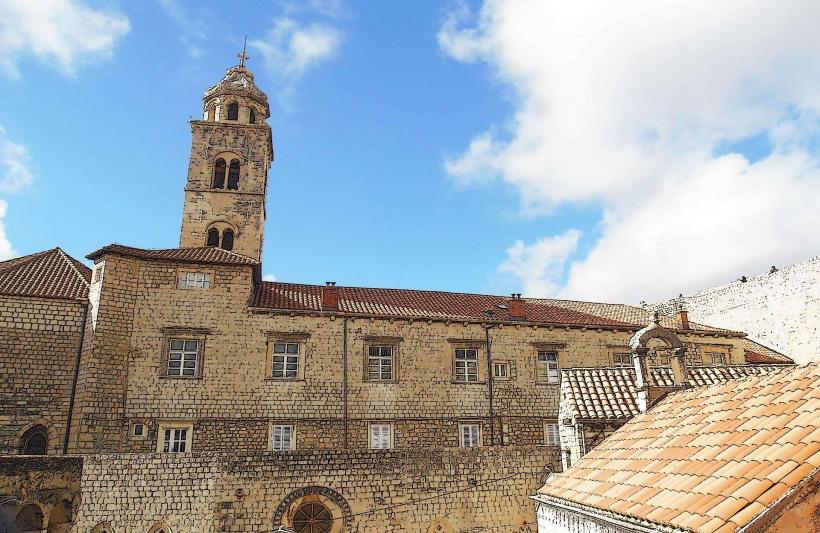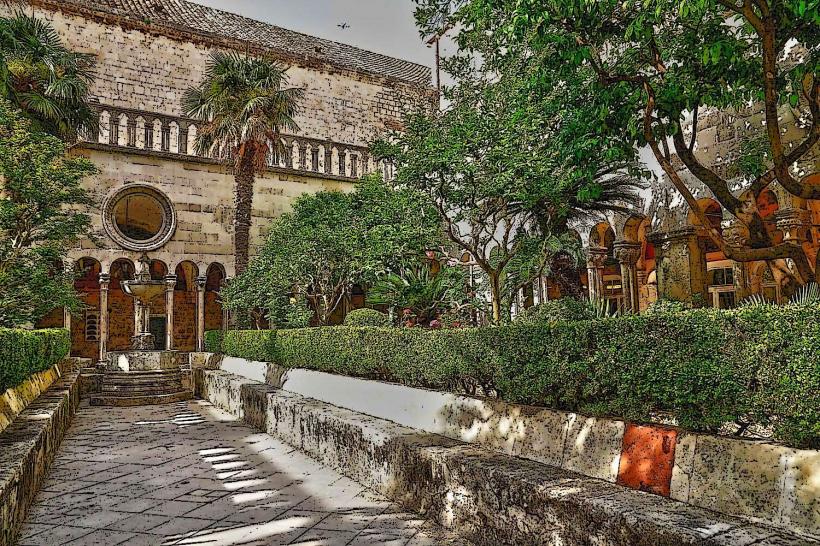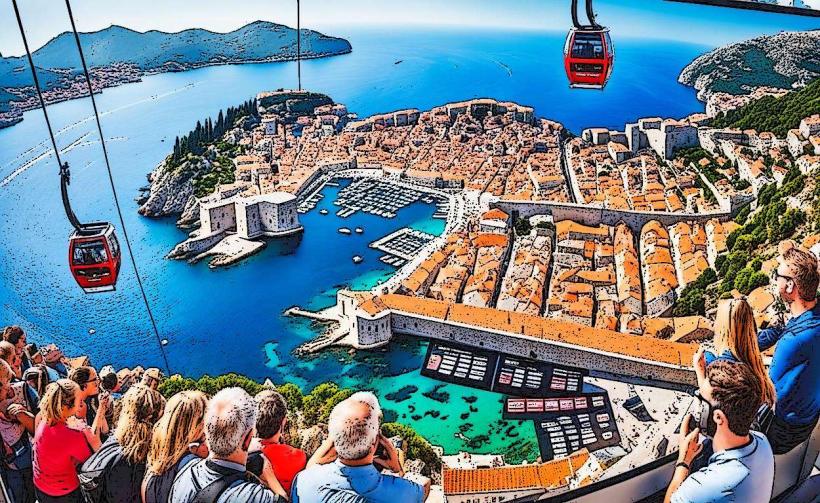Information
Landmark: Sponza PalaceCity: Dubrovnik
Country: Croatia
Continent: Europe
Sponza Palace (Palača Sponza)
The Sponza Palace (Palača Sponza) is one of Dubrovnik's most beautiful and historically significant buildings. Located at the intersection of Stradun and the Od Punte street in the Old Town, the palace is renowned for its architectural elegance and its role in the political, financial, and cultural life of Dubrovnik. It’s a must-visit landmark for anyone interested in the city’s rich heritage.
Historical Background
- Origins and Construction: The Sponza Palace was built in the 16th century, between 1516 and 1522, and originally served as a commercial building and customs house. The name "Sponza" is derived from the Latin word sponza, meaning "storehouse," which refers to its original function.
- Republic of Ragusa: Over the centuries, the palace played an important role in the administration of the Republic of Ragusa, the independent city-state that once controlled Dubrovnik. The palace was used for various state functions, housing the customs office, and it also became the place where public records were kept.
- Architectural Evolution: The building is a blend of Gothic and Renaissance architectural styles, reflecting the city’s wealth and its significant cultural exchanges with Italy during this period. It was later renovated and expanded in the Baroque style after the 1667 earthquake, which caused significant damage to Dubrovnik.
Architectural Features
- Facade: The facade of the Sponza Palace is a striking example of Gothic architecture, combined with Renaissance and Baroque elements. Its stone exterior is decorated with beautiful Gothic arches, columns, and sculptural reliefs. The building’s large windows and elegant arches give it a grand, yet restrained, appearance.
- Portico and Courtyard: One of the most distinctive features of the Sponza Palace is its portico—a covered, open space with arches along the building’s front. The courtyard is also an important part of the building’s design, providing an open-air area where the public could gather.
- Renaissance Influence: The palace’s design reflects the Renaissance influence on Dubrovnik’s architecture, with columns, pilasters, and a balanced, symmetrical layout. The proportions and details are carefully crafted to embody the Renaissance ideals of order and harmony.
- Baroque Touches: After the 1667 earthquake, the palace was renovated in the Baroque style, especially in the interior, adding more elaborate decorations, including ornate ceilings and furniture. The changes blended well with the building’s original Renaissance and Gothic elements, creating a rich historical texture.
Key Features and Functions
- The State Archives: Today, the Sponza Palace houses the State Archives of Dubrovnik. It is the repository for historical documents and records that detail the administrative, political, and cultural history of the city-state of Ragusa. The archives contain many valuable manuscripts, books, and state documents dating from the 15th century onwards.
- Public Functions: In the past, the palace was not only a commercial hub but also used for public functions such as government meetings and ceremonies. It played a central role in Ragusa's civic life.
- Rector’s Role: The palace also served as a meeting place for the Rector of Ragusa, who would come here to attend state affairs. The Rector's Court was located within the palace.
- Historical Documents: The archives housed within the palace are among the most important historical resources for understanding the history of Dubrovnik and the wider Adriatic region. Some documents are medieval and date back to the time of the Republic of Ragusa.
Interior and Museum
- Exhibits: Inside the Sponza Palace, the museum is dedicated to showcasing Dubrovnik’s history and culture. Visitors can see a wide variety of historical items, including medieval manuscripts, state documents, maps, and even diplomatic correspondence.
- The Archive Room: The Archive Room of the palace holds some of the most important government records of Dubrovnik, with materials related to its diplomacy, foreign relations, and day-to-day governance.
- Sculptures and Reliefs: In addition to the historical exhibits, the interior also features various sculptures and reliefs that depict figures and scenes from Dubrovnik’s past.
Visiting the Sponza Palace
- Opening Hours: The Sponza Palace is open to the public, with opening hours typically extending from morning to early evening. It is often part of a broader walking tour of Dubrovnik’s Old Town.
- Admission: There is an entry fee to visit the museum and view the archives. However, access to the courtyard and exterior of the building is free.
- Best Time to Visit: Early mornings or late afternoons are ideal for avoiding the busiest crowds, especially during the summer months when Dubrovnik sees a large influx of tourists.
- Accessibility: The palace is located on Stradun, making it easy to access from all parts of Dubrovnik’s Old Town. The museum is wheelchair accessible, though certain areas of the building may be more challenging due to its historic architecture.
Nearby Attractions
- Stradun: The palace is located along Stradun, Dubrovnik’s main street, which is lined with shops, restaurants, and other historic landmarks.
- Rector’s Palace: Located nearby, the Rector’s Palace is another significant historical building in Dubrovnik, serving as the former residence of the Rector of the Republic of Ragusa and now a museum.
- Dubrovnik Cathedral: The Dubrovnik Cathedral, a Baroque church with beautiful art and architecture, is just a short walk away from the palace.
- Onofrio’s Fountain: A historical water source that was part of Dubrovnik's water supply system, this fountain is located near Pile Gate and provides a great place for tourists to stop and enjoy the city.
- City Walls: The famous city walls that surround Dubrovnik’s Old Town offer panoramic views of the city, the Adriatic Sea, and the surrounding islands.
Fun Facts
- Renaissance Influence: The Sponza Palace is one of the few buildings in Dubrovnik that still retains its original Renaissance design, making it an important example of the architectural style.
- Baroque Renovations: The palace’s renovations after the 1667 earthquake are some of the finest examples of Baroque architecture in Dubrovnik.
- Cultural Heritage: The State Archives in the palace house documents that date back more than 500 years, making them some of the oldest surviving records in the region.
- Public Record: One of the most famous records held in the archives is the Dubrovnik Statute, a legal document that helped govern the Republic of Ragusa.
Why Visit Sponza Palace?
- Historical Significance: The palace is a key part of Dubrovnik’s history, housing important documents and serving as a center of government for centuries.
- Architectural Beauty: With its Gothic, Renaissance, and Baroque features, the palace is a stunning example of Dubrovnik’s architectural evolution.
- Cultural and Historical Museum: The museum offers a fascinating look into the city’s past, displaying documents and artifacts from the Republic of Ragusa and Dubrovnik’s role in the Mediterranean.
- Central Location: Located on Stradun, it is an easy landmark to find while exploring the Old Town, and it complements a visit to nearby attractions like the Rector’s Palace and Dubrovnik Cathedral.
Conclusion
The Sponza Palace is not just an architectural masterpiece but also a repository of Dubrovnik’s history. Whether you’re interested in exploring its beautiful design, learning about the Republic of Ragusa, or browsing the archives and exhibits, the Sponza Palace offers visitors a chance to engage with the city’s past in a meaningful and enriching way.

